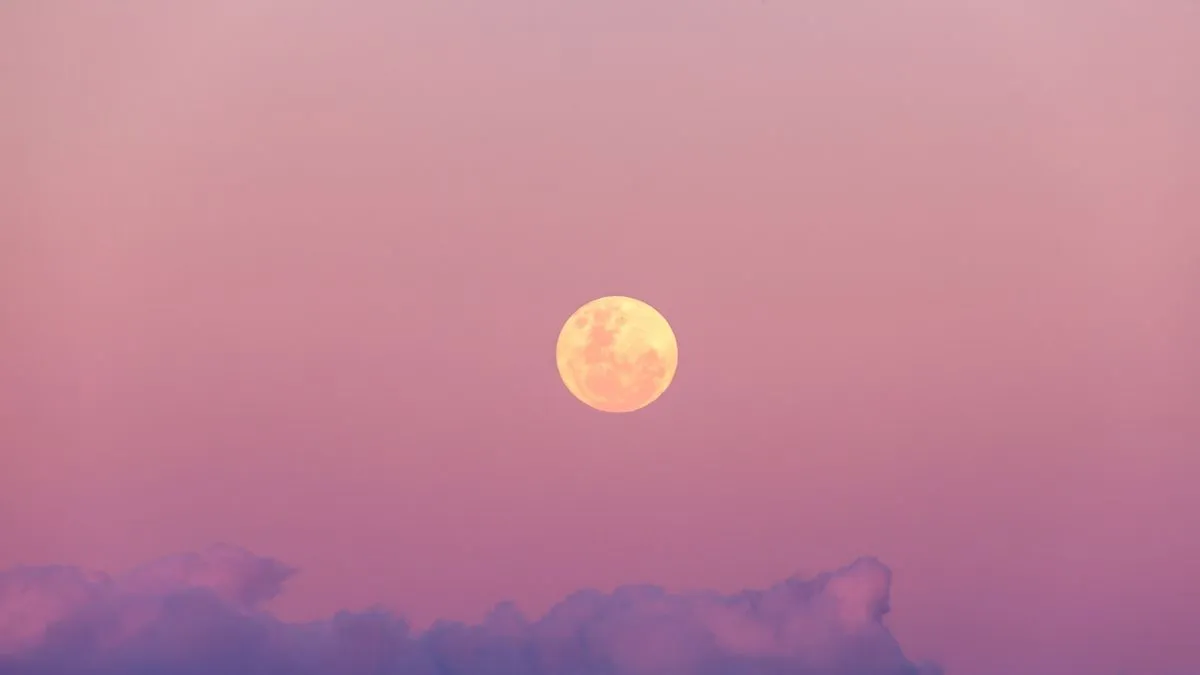
Attention, skywatchers! This weekend promises a spectacular celestial event as April's full moon, famously known as the Pink Moon or Paschal Moon, will rise on the evening of Saturday, April 12. While this full moon won't actually take on a pink hue, it holds a significant distinction as the smallest full moon of the year, often referred to as a micromoon.
The Pink Moon earns its title as a micromoon due to its occurrence when the moon is at its farthest point from Earth in its orbit, a position known as apogee. This distance results in the moon appearing slightly smaller and dimmer than usual, though the difference may be subtle to the naked eye. The full moon will reach its peak illumination at 8:22 p.m. EDT (0022 GMT on April 13), with local moonrise and moonset times varying based on your location.
For the best viewing experience, direct your gaze to the eastern horizon around sunset. For instance, in New York City, the moon is set to rise at 7:30 p.m. EDT, just two minutes before sunset, creating a stunning backdrop as a golden moon ascends into the twilight sky. The moon will be situated in the constellation Virgo, near the bright blue-white star Spica.
Skywatchers in Central and South America, as well as parts of southern Africa, can look forward to an additional spectacle — the full moon will briefly cover Spica in an event known as an occultation. The timing of this event will vary by location, with the full occurrence visible in cities such as Buenos Aires, Caracas, and Montevideo.
The full moon in April also plays a crucial role in various religious calendars. In the Christian tradition, the Paschal Moon helps determine the date of Easter, which falls on the first Sunday after the first full moon following the vernal equinox. For 2025, Easter will be celebrated on April 20.
The name Pink Moon derives from the early spring wildflower known as moss pink or creeping phlox, one of the first flowers to bloom in North America. This name has its roots in Native American traditions and was popularized by the Old Farmer's Almanac. Other historical names for April's full moon include the Sprouting Grass Moon, Egg Moon, and Fish Moon, each reflecting seasonal transitions in various cultures.
Capturing stunning images of the Full Pink Moon is easier than you might think! To avoid blur, use a tripod, and if you're using a DSLR or mirrorless camera, opt for a telephoto lens (200mm or longer) to capture intricate details. Experiment with manual settings: an ISO of 100–400, an aperture of f/8 to f/11, and a shutter speed between 1/125 to 1/250 seconds will yield great results. Including a building, tree, or skyline can add scale and drama to your photos.
For smartphone photographers, using the night mode or a manual camera app can help fine-tune settings. Remember, the best photographs often occur just after moonrise when the moon is low, and the sky is still rich with color. For those seeking to enhance their skills, check out our guide on how to photograph the moon. If you're considering investing in photography equipment, explore our overview on the best cameras for astrophotography and the best lenses for astrophotography.
In summary, the April Full Moon, also known as the Pink Moon, will rise on Saturday, April 12, peaking at 8:22 p.m. EDT. Recognized as the smallest full moon of 2025, it occurs when the moon is at its farthest point from Earth, or apogee. Despite its name, the Pink Moon won't appear pink; rather, it is named after the beautiful wildflowers that bloom in spring.